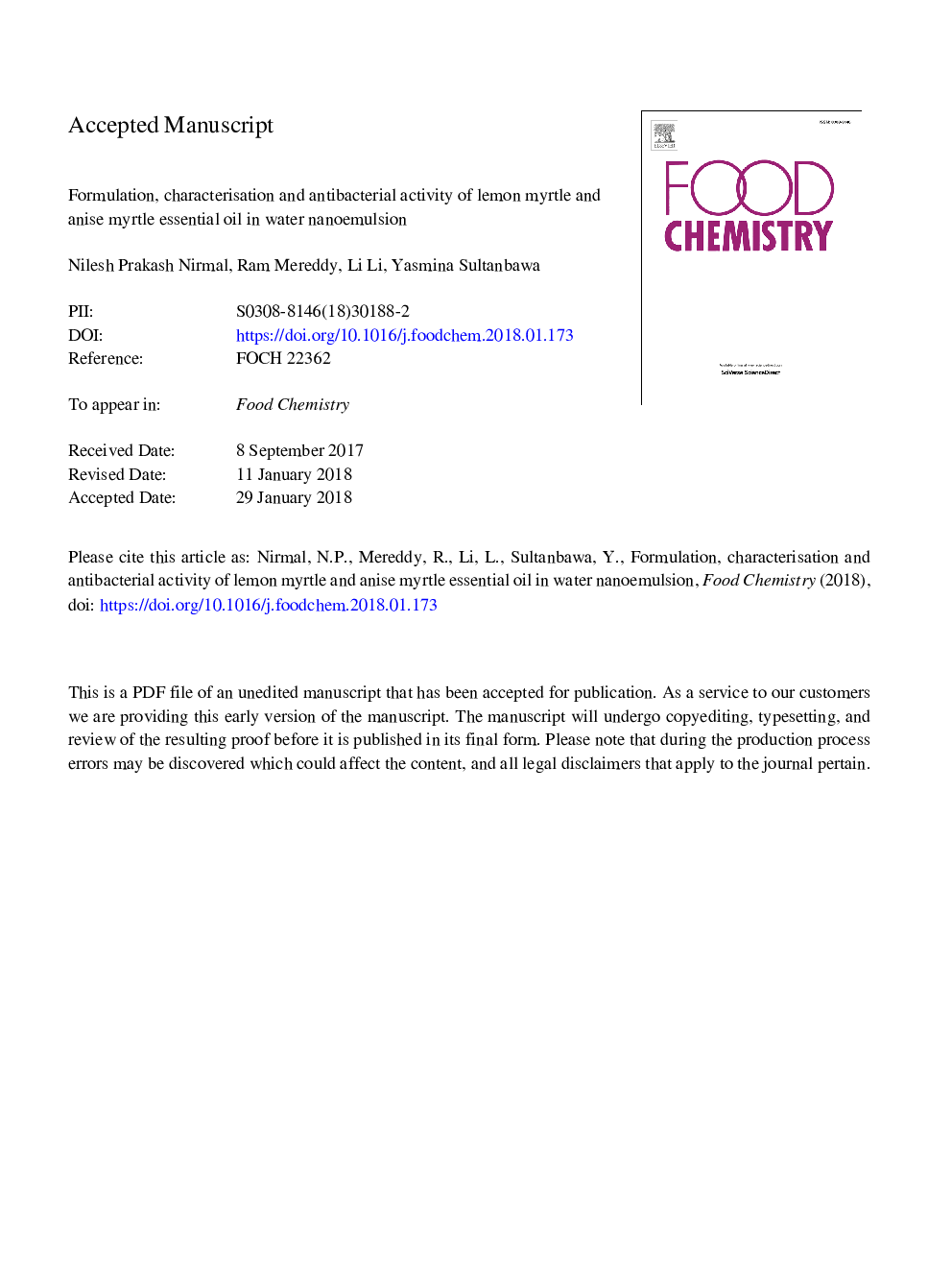| Article ID | Journal | Published Year | Pages | File Type |
|---|---|---|---|---|
| 7585388 | Food Chemistry | 2018 | 31 Pages |
Abstract
This study focussed on the formulation, characterisation of lemon myrtle (LM) and anise myrtle (AM) essential oil (EO) in water nanoemulsion and their antibacterial activity. The required hydrophilic lipophilic balance (rHLB) value of LM EO and AM EO was 14 and 12, respectively. The Central Composite Rotatable Design (CCRD) model produces the smallest droplet size and polydispersity index (PDI) for LMEO (dâ¯ââ¯16.07â¯nm; PDIâ¯ââ¯0.209) and AMEO (dâ¯ââ¯30.23â¯nm; PDIâ¯ââ¯0.216) at 1% EO and 10% surfactant mixture (Smix) ratio using ultrasonication for 5â¯min. Whereas, increased in EO, decrease in Smix concentrations and ultrasonication time produces higher droplet size of nanoemulsions. LMEO (LM-15, LM-17) nanoemulsions was clear and transparent compared to AMEO (AM-15, AM-17). All the selected nanoemulsions showed good stability at 4, 25 and 40â¯Â°C during storage, except LM-15 at 40â¯Â°C. LMEO nanoemulsion showed enhanced antibacterial activity compared to LMEO alone (Pâ¯<â¯0.05).
Related Topics
Physical Sciences and Engineering
Chemistry
Analytical Chemistry
Authors
Nilesh Prakash Nirmal, Ram Mereddy, Li Li, Yasmina Sultanbawa,
